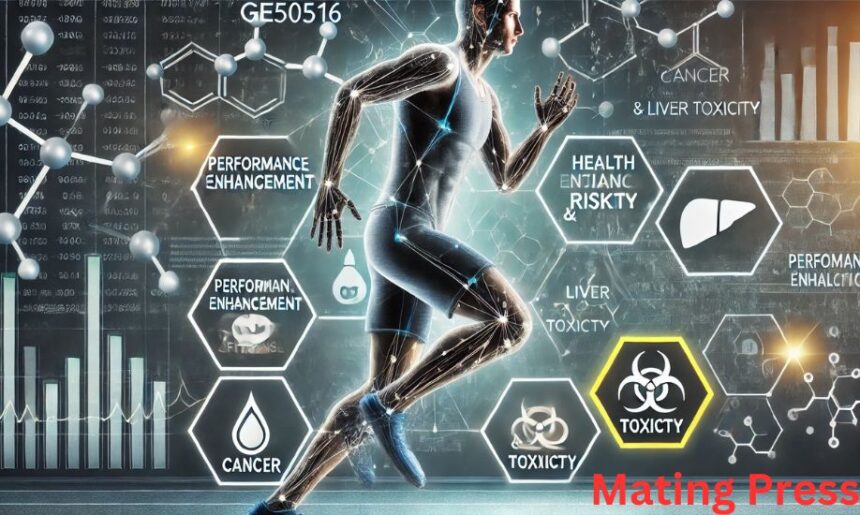In the world of advanced fitness and athletic performance enhancement, certain compounds gain both admiration and infamy. Ge50516, more commonly referred to as GW501516 or Cardarine, is one such compound. It has attracted attention for its remarkable effects on endurance, fat loss, and metabolic function. Despite these benefits, Ge50516 has faced significant controversy due to its associated health risks, leading to its ban in professional sports and its discontinuation as a therapeutic agent. In this article, we will explore what Ge50516 is, its usage in fitness, the dangers it presents, and the ethical concerns surrounding its application.
What is Ge50516?
Ge50516, also known as GW501516, was originally developed in the 1990s as a drug intended to treat metabolic and cardiovascular diseases, particularly targeting cholesterol levels and increasing fat metabolism. Researchers discovered that it activates the peroxisome proliferator-activated receptor-delta (PPAR-delta), a pathway that enhances energy metabolism and improves endurance by promoting fat breakdown and increasing energy expenditure in muscle tissues. As a result, it showed promise in managing obesity, diabetes, and cardiovascular conditions【6】【7】.
However, as the potential for enhancing physical performance became evident, Ge50516 shifted from medical research to the fitness and athletic communities. Its ability to boost endurance and promote fat loss made it popular among bodybuilders, athletes, and even some endurance sports participants. This newfound application came with its own set of challenges, which we will explore in the following sections.
The Appeal of Ge50516 in Fitness
One of the main reasons Ge50516 has become so popular in fitness circles is its ability to increase muscle endurance and fat metabolism without causing the same harmful side effects as anabolic steroids. Unlike steroids, which can suppress natural hormone production and lead to various side effects like liver damage, acne, and hair loss, Ge50516 does not affect hormone levels. This makes it particularly attractive to athletes looking for a safer way to enhance their performance【7】【9】.
Ge50516’s effects are especially beneficial for bodybuilders and fitness enthusiasts who are undergoing strict calorie-restrictive diets. It helps maintain muscle mass while promoting fat loss, making it easier for individuals to achieve a lean physique without sacrificing strength or endurance【8】. Additionally, Ge50516 has shown promise in improving cholesterol levels by increasing high-density lipoprotein (HDL) and lowering low-density lipoprotein (LDL), potentially offering cardiovascular benefits for users【9】.
Risks and Health Concerns Associated with Ge50516
Despite its benefits, Ge50516 is not without serious risks. One of the most alarming concerns surrounding its use is its carcinogenic potential. During preclinical trials, long-term use of Ge50516 was linked to the development of tumors in multiple organs, including the liver, bladder, stomach, and thyroid. This led to the discontinuation of its development as a medical treatment and its classification as a dangerous substance【8】【9】.
The World Anti-Doping Agency (WADA) officially banned Ge50516 in 2009 after concerns arose about its misuse in professional sports. Several high-profile athletes have tested positive for the compound, resulting in suspensions and bans. WADA has also issued public warnings about the severe health risks associated with Ge50516, urging athletes to avoid the substance due to its carcinogenic properties【7】【10】.
In addition to cancer risks, Ge50516 has been linked to liver toxicity, insomnia, and other side effects that make it a dangerous choice for those seeking performance enhancement. These risks are exacerbated when the compound is used in high doses or for extended periods, as many fitness enthusiasts tend to do in their pursuit of better performance【8】.
Ge50516 in Professional Sports
As mentioned earlier, the use of Ge50516 has resulted in several doping scandals in professional sports. One of the most notable cases occurred in 2019 when American heavyweight boxer Jarrell Miller tested positive for the substance, resulting in the cancellation of his highly anticipated fight against Anthony Joshua【7】. Similar cases have occurred in cycling, track and field, and other sports where endurance and physical performance are critical.
The controversy surrounding Ge50516 highlights the ongoing challenge faced by sports organizations in combating the use of performance-enhancing drugs. While athletes are often under immense pressure to perform at the highest level, the use of substances like Ge50516 not only violates the principles of fair play but also puts their health at significant risk【7】.
Legal and Ethical Considerations
The use of Ge50516 raises several legal and ethical concerns, particularly in the context of professional sports. Athletes who use banned substances not only risk their careers but also set a dangerous precedent for younger athletes who may feel pressured to follow suit. The long-term health risks associated with Ge50516, particularly its link to cancer, make it clear that the short-term gains in performance are not worth the potential consequences【9】.
From a legal perspective, Ge50516 remains classified as a research chemical in many countries, meaning it has not been approved for human use. Despite this, it is still readily available online, where it is often marketed as a fitness supplement or performance enhancer. The lack of regulation surrounding these substances makes it difficult for authorities to curb their use, further complicating the issue.
The Future of Ge50516
As research continues, there is a growing interest in developing safer alternatives to Ge50516. Scientists are exploring other PPAR-delta agonists that could offer the same benefits without the associated risks. However, it is unlikely that Ge50516 will ever be approved for therapeutic use due to its carcinogenic properties. Athletes and fitness enthusiasts are encouraged to seek safer, legal methods of enhancing their performance, such as proper training, nutrition, and recovery strategies【6】【9】.
Conclusion: Why Understanding Ge50516 Matters
Understanding the risks and benefits of Ge50516 is essential for anyone considering its use, particularly in the context of sports and fitness. While it may offer impressive short-term gains in endurance, fat loss, and overall performance, the long-term health risks far outweigh the benefits. The use of Ge50516 remains banned in professional sports, and athletes are advised to avoid it due to its potential to cause cancer and other serious health issues【9】.
In conclusion, the story of Ge50516 is a cautionary tale in the world of performance enhancement. For athletes, bodybuilders, and fitness enthusiasts alike, it is crucial to prioritize health and well-being over short-term performance gains. The allure of substances like Ge50516 may be tempting, but the risks they pose are simply too great to ignore. Mating Press, a platform that values informed decisions, encourages readers to understand the full scope of such substances and make choices that promote long-term health and success.





